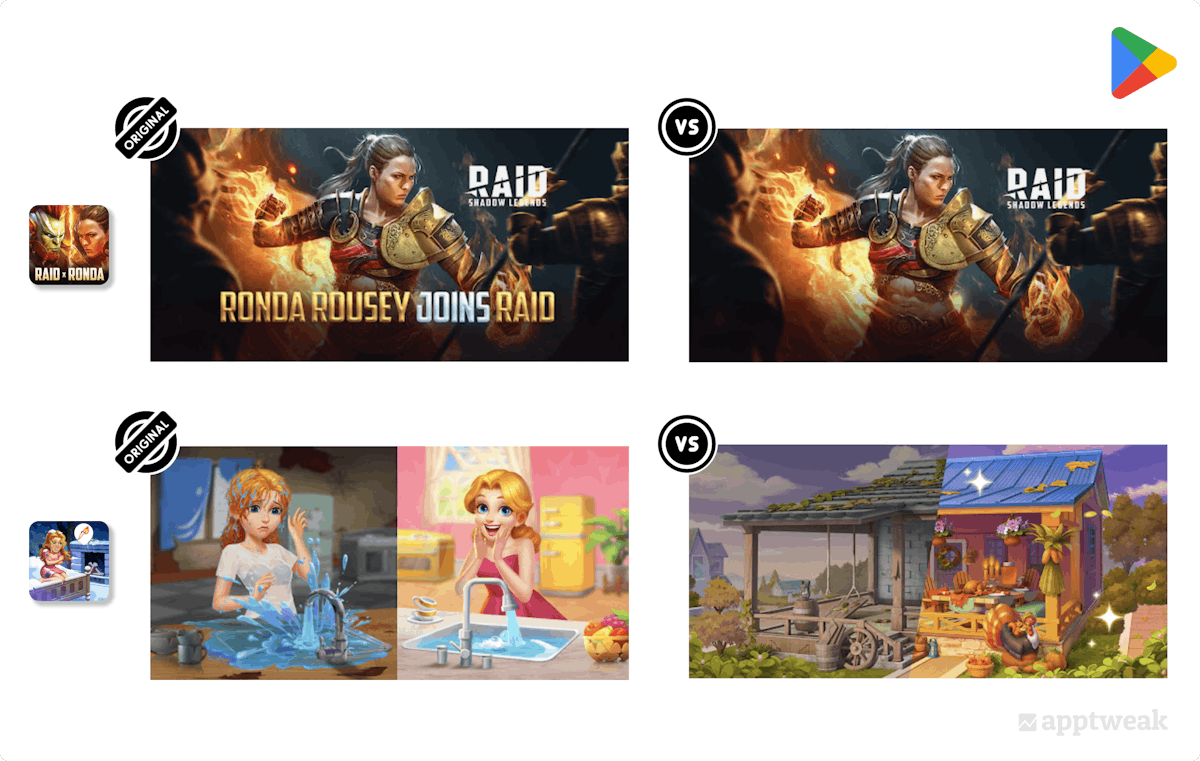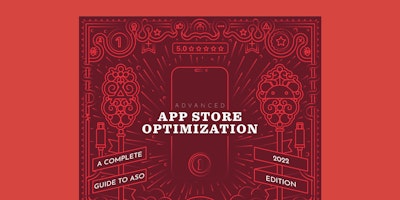
7 ASO Techniques & Tactics for Mobile Game Companies
If you have published a mobile game and/or you manage one, something that you might often wonder is how to increase your downloads. Paid efforts can take you to a certain level, but have you ever considered App Store Optimization (ASO) for your mobile game? ASO ensures that your mobile game is visible to the right people with the objective of increasing your downloads.
Easily synergized with other marketing efforts, ASO for mobiles games can give you that little extra push that will set you apart in a competitive but potentially highly profitable market.
In this blog, we present you the basics of ASO for mobile games through 7 simple and actionable tips.
1. Optimize keywords for your game metadata
Leverage the entire character space in metadata
Apple and Google give you limited space to describe your mobile game and its benefits on the app stores, so try to use this allocated space wisely. Use the different available text fields (title, short description/subtitle, and long description) to present your game’s features and set the expectations. Most importantly, give incentive to store visitors to play your game.
Structure your game’s content clearly, and keep in mind the purpose of the different character fields. Remember that your title (which should include descriptive keywords alongside your brand name) and the subtitle/short description are important for conversion. Make sure to keep these fields short and catchy, inciting store visitors to tap through.

The (long) description, on the other hand, is an opportunity to present your game in more detail. Keep in mind that store visitors who read your long description are users who are looking for a bit more information and need convincing before downloading your game.
Target generic but relevant keywords in your metadata
When you write your metadata, you may think that your only audience is your store visitors. However, among them are the algorithms of Apple and Google. They analyze your app page at regular intervals to better understand what your game is about. For this, algorithms rely on the keywords present in your metadata.
When you launch your game, Apple and Google algorithms show you in the search queries of store visitors who include keywords that you target in your metadata. They then observe whether store visitors are clicking on your game. If your game doesn’t convert for a keyword, you fall in the rankings of the search results page – and vice versa.
It is thus important to target relevant generic keywords in your metadata. If the keyword that users searched for has been added to your metadata, your game has a chance to rank for that search term.
2. Choose the right app store category for your mobile game
You need to choose a category for your game when you want to register it on the app stores. But what is the category for? How can it help your ASO strategy for your mobile game? To put it simply, the category is an element that Apple and Google algorithms use to better categorize and understand your game. Although not very visible to visitors, the category can play a role in the discovery of your game.
On the App Store, in particular, your main category name (you also have to choose a secondary category listed in Games) is automatically indexed by the algorithm. So, for example, for your game to appear in the search results, you no longer have to target the word “strategy” in your metadata for someone looking for a strategy game.
On the Play Store, Google has added a second similar element to the category – tags. Tags help Google understand what your app is about. These simple keywords are another way to tell the algorithm what the defining elements of your game are. Google will use them to more accurately target an audience that might be interested in a game like yours.
Expert Tip
Even if you don’t select a tag for your game, Google may automatically assign you one. Some of these automatically assigned tags cannot be chosen in the Google Play Console. The most recurring automatically assigned tags are: “Offline,” “Single Player,” and “Stylised.”
Understand what category volatility is and choose the best category for your game
3. Optimize your game creatives with A/B testing
On both the App Store and Google Play, visual assets are a critical part of App Store Optimization (ASO). Your game’s icon, screenshots, and preview videos have a high potential for conversion. However, finding the creatives that convert best is no easy task. Do store visitors prefer simple screenshots that show the game’s UI? Or do they prefer elaborate screenshots, closer to an artistic illustration? Why not ask store visitors directly?
With the help of A/B testing – putting one or more variants of an element of your app page in competition with the default one – you can easily and objectively discover visitors’ preferences. With A/B testing, you can better understand the expectations of your target market so that you can adjust your app page accordingly.
A variant that performed worse than the original version can tell you what doesn’t appeal to your audience. This is a valuable insight that can be leveraged in any of your future marketing efforts.

Check out our beginner’s guide to A/B testing
4. Localize your mobile game’s app page
Developers sometimes use their English app page as default in all markets where their game is available. However, each market has its own specificities in terms of societal attitudes and cultural norms. Aligning your game’s app page with these specificities can help you increase your game’s downloads.
Start by determining which markets generate the highest revenue for your mobile game and which languages are worth localizing your game into. Next, determine how much effort you want to put into localization. To boost your game visibility in a new market, it is important to conduct keyword research and optimize your mobile game for that specific locale.
Going one step further, you can also consider localizing your creatives for the targeted market. This requires a more in-depth analysis to better understand the target market as well as its cultural codes and seasonal events. It also means understanding the creative trends on both the app stores by reviewing the app pages of games similar to yours or belonging to the same category.

Learn how to localize your game with this step-by-step guide
5. Read (and reply to) reviews for your mobile game
In need of inspiration for the next content, feature, or event you want to bring to your mobile game? Look no further! The reviews that users leave on your game’s app page are a great (and free) source of feedback. Reviews and ratings inform you about what aspects of your game work well and what aspects should be tweaked or even removed.
Reviews can also be used to detect bugs that plague the game and spoil the user experience. As bugs increase users’ churn and lead to negative reviews being written about the game, the goal is to fix these as quickly as possible.
Replying to reviews is important to maintain a strong relationship with your users. Prioritize replying to negative reviews as it assures other users that you’re active around product issues, which can improve conversion.
Find out how to answer to good and bad reviews on the app stores
6. Implement a ratings prompt for your game
Store visitors who naturally leave ratings on the app stores are generally dissatisfied users, meaning they’ll leave negative ratings. Since your game’s average rating is one of the key elements store visitors look at before installing it, you don’t want your average rating to be low.
The best course of action in this case is to tackle the problem head on. Don’t wait for users to leave positive ratings; instead actively ask them to leave a rating. Both the app stores give you the option to implement a rating prompt – a pop-up window that asks the user to rate your game from 1 to 5 stars – within your game.

It is essential to find the right moment to ask the users for their rating. Rather than interrupting them in a crucial action and frustrating them, trigger the ratings prompt when the user has finished accomplishing a challenging task and is more likely to leave a positive rating. In a game, this can be as simple as the end of a particularly difficult boss fight or an intense chapter in the story.
7. Personalize your customer journey with CPPs
While they may look complicated, custom product pages (CPPs) are a simple concept – a variation of your default app page that you can customize and administer to a specific segment of your audience. For those familiar with web marketing, think of a landing page.
CPPs are often associated with ads, though they can be administered in different places. As they take the form of a custom URL link, you can logically place them anywhere that accepts a link. You can insert them on the web page that presents your game and highlight, for example, the cross-playability of your game for those web visitors who are perhaps more inclined to play on a computer.
Overall, CPPs are a great tool to create a consistent user acquisition journey and increase the conversion rate of your mobile game.
Expert Tip
Custom product pages is the term used on the App Store. On Google Play, the same feature is called custom store listings. Custom store listings are essentially the same as custom product pages despite minor differences.Check out AppTweak’s predictions for custom product pages in 2023
Conclusion
The ball is now in your court to create a robust App Store Optimization strategy for your mobile game. Take the time to familiarize yourself with both the app stores, their logic and their algorithms, and learn from your store visitors’ behavior.
Above all, take the time to measure the impact of your changes. ASO for mobile games is a process whose benefits are reaped over time.



 Georgia Shepherd
Georgia Shepherd

 Micah Motta
Micah Motta

 Oriane Ineza
Oriane Ineza

 Lina Danilchik
Lina Danilchik

 Alexandra De Clerck
Alexandra De Clerck

 Simon Thillay
Simon Thillay